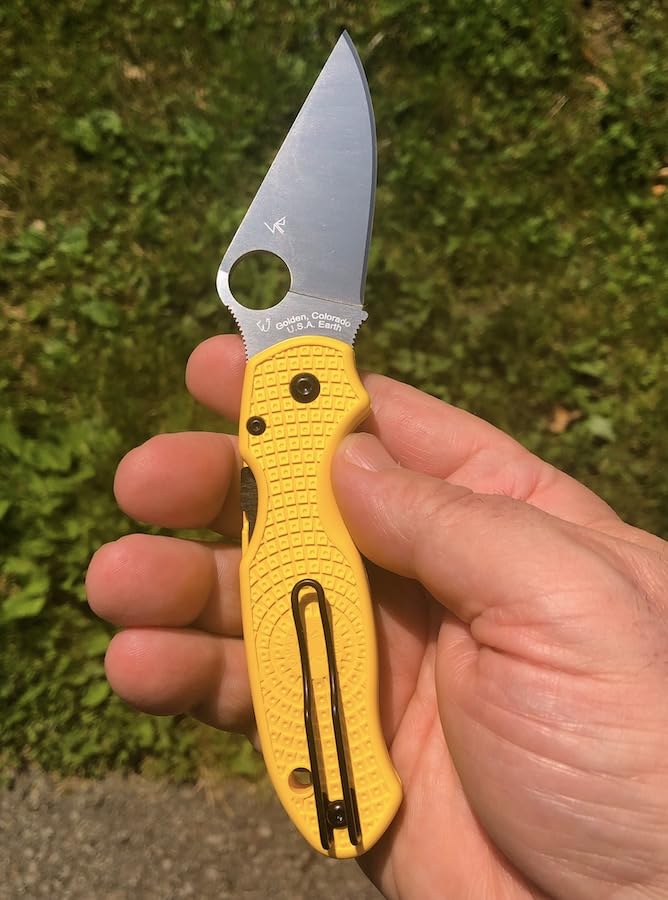CTS XHP, developed by Carpenter Technology Corporation, can be considered either as a high-hardness 440C stainless steel or a corrosion-resistant D2 tool steel.
On the other hand, CPM MagnaCut is a unique powder metallurgy stainless tool steel designed by Dr. Larrin Thomas and produced by Crucible through the CPM process.
While CTS XHP relies on a combination of high chromium content to attain its corrosion resistance, CPM MagnaCut takes a new approach by eliminating chromium carbides in its microstructure.
CTS-XHP vs MagnaCut Steel At A Glance
| Properties | CTS XHP Steel | CPM MagnaCut Steel |
|---|---|---|
| Hardness | Maximum hardness around 64 HRC | Maximum hardness up to 65 HRC |
| Toughness | Better than S30V, similar to S35VN | Superior to XHP, S35VN and S30V |
| Edge Retention | Slightly better than CPM MagnaCut, | Good but slightly lower than XHP |
| Corrosion Resistance | Slightly better than D2 steel | Superior Corrosion Resistancet |
| Ease of Sharpening | Relatively difficult to sharpen | Better grindability and ease of sharpening |
Hardness
CTS XHP steel can attain a maximum hardness of around 64 HRC through air-hardening, making it suitable for knives that require high hardness and wear resistance.
Recommended Knives:
However, CPM MagnaCut steel achieves an even higher maximum hardness, reaching up to 65 HRC with liquid nitrogen or dry ice treatment after quenching.
CTS XHP was designed to better the hardness of 440C which typically achieves around 59Hrc.
Toughness
CPM MagnaCut steel exhibits superior toughness compared to CTS XHP steel, which can have significant implications for their performance in knives.
MagnaCut’s toughness is higher than that of S35VN and S30V stainless steels, while CTS XHP’s toughness is better than S30V and similar to S35VN.
Crucible Longitudinal Charpy C-Notch toughness testing shows MagnaCut achieves toughness values of 38 ft-lbs at hardness levels of 62.5 HRc, CTS-XHP is expected to achieve 25 ft-lbs at a round 60HRc.
The higher toughness of MagnaCut translates into greater resistance to chipping and improved edge stability, making it more suitable for knives that may encounter demanding cutting tasks or impacts.
MagnaCut knives can have thinner and more acute edge geometries without compromising their edge integrity, enhancing their cutting performance and edge retention.
In contrast, CTS XHP’s lower toughness compared to MagnaCut increases the susceptibility of its edges to chipping and rolling, especially under high stress or impact conditions.
Consequently, if toughness and edge stability are critical considerations, MagnaCut’s superior toughness makes it a more suitable choice for knives that require exceptional edge performance and durability.
Edge Retention
CTS XHP steel exhibits slightly better edge retention and or wear resistance compared to CPM MagnaCut steel.
In CATRA (Cutlery & Allied Trades Research Association) testing, which measures relative wear resistance, CTS XHP performed slightly better than MagnaCut.
Knives made from CTS XHP may retain their edge slightly longer than those made from MagnaCut when subjected to similar cutting tasks and conditions.
However, it is important to note that the difference in edge retention between the two steels is relatively small. MagnaCut’s edge retention is described as being similar to steels like S35VN, CPM-4V, and CPM-CruWear,
Corrosion Resistance
CPM MagnaCut steel exhibits superior corrosion resistance compared to CTS XHP steel.
MagnaCut corrosion resistance is even better than steels like 20CV and S45VN, and very close to highly corrosion-resistant steels like Vanax or LC200N.
MagnaCut’s excellent corrosion resistance is attributed to the absence of chromium carbides in its microstructure, which eliminates locally chromium-depleted regions that are susceptible to corrosion.
In contrast, CTS XHP steel is stated to have corrosion resistance slightly better than D2 steel, which is generally considered moderate to good, but not exceptional.
Ease of Sharpening
MagnaCut steel has better grindability and ease of sharpening compared to CTS XHP steel.
Many knifemakers who tested MagnaCut reported that it grinds and finishes easier than steels like S35VN and S45VN, which have a relatively small amount of vanadium and niobium carbides.
Knifemakers found MagnaCut knife steel easier to sharpen than steels like CPM-154 and even CPM-4V steel.
MagnaCut superior grindability and ease of sharpening is attributed to its finer microstructure aided by the niobium carbides.
Final Thoughts on CTS-XHP vs MagnaCut Steel
In my experience with both CTS XHP and CPM MagnaCut steels, I find CTS XHP to be an underrated steel in the knife world despite its excellent balance of properties.
While MagnaCut offers superior toughness and corrosion resistance, you cannot go wrong with either steel you choose between the two.
However, MagnaCut’s innovative design has generated a craze in the knife world, leading many knifemakers to adopt this new steel. As a result, MagnaCut may surpass CTS XHP in popularity, at least initially.
It’s worth noting that companies like Cold Steel Knives decided to move away from XHP due to availability issues, which could have contributed to its underrated status.
Nevertheless, I find XHP to be the most underrated knife steel that can compete with most premium steels in terms of its well-balanced properties.
While MagnaCut undoubtedly brings exciting advancements to the table, CTS XHP should not be overlooked.
